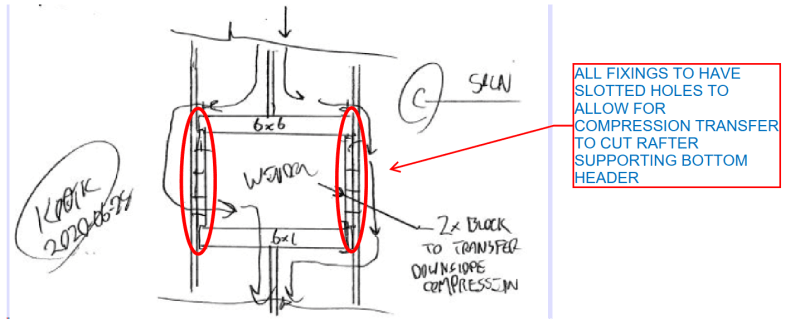Pawel1234
Structural
- May 19, 2020
- 8
Hi All,
I am new to the forum and this is my first post. I am looking forward to contributing and broadening my engineering experience.
I would like to know your opinion on how to best approach truss modifications where existing attic trusses need to be cut to form openings, for example, for velux windows or dormers.
Would you support the cut trusses only at velux bridles, as per sketch a (please see attached sketch(, at velux bridles and a ridge beam/top hat beams (sketch b) or at all node points (skecth c)?
Obviously from a contractor's point of view a smaller number of supports would be the best option. On the other hand, the addtional supports will provide better support to the cut trusses, potentially limiting any increased deflections resulting from the loss of triangulation after cutting. Also, the addtitonal supports will distribute load from the cut truss more evenly to adjacent doubled/tripled trusses potentially making the whole arrangement more structurally efficient.
Thanks in advance.
I am new to the forum and this is my first post. I am looking forward to contributing and broadening my engineering experience.
I would like to know your opinion on how to best approach truss modifications where existing attic trusses need to be cut to form openings, for example, for velux windows or dormers.
Would you support the cut trusses only at velux bridles, as per sketch a (please see attached sketch(, at velux bridles and a ridge beam/top hat beams (sketch b) or at all node points (skecth c)?
Obviously from a contractor's point of view a smaller number of supports would be the best option. On the other hand, the addtional supports will provide better support to the cut trusses, potentially limiting any increased deflections resulting from the loss of triangulation after cutting. Also, the addtitonal supports will distribute load from the cut truss more evenly to adjacent doubled/tripled trusses potentially making the whole arrangement more structurally efficient.
Thanks in advance.



